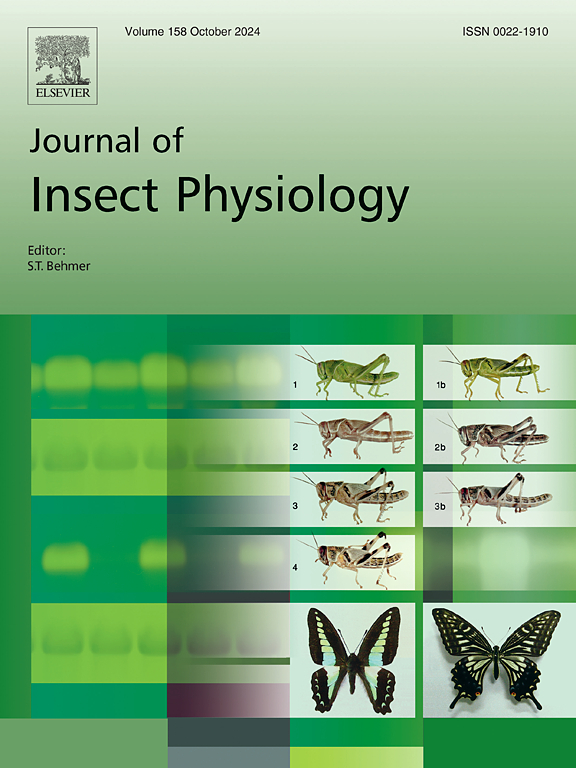Intestinal flow and digestive parameters of Lutzomyia longipalpis larvae
IF 2.3
2区 农林科学
Q1 ENTOMOLOGY
引用次数: 0
Abstract
Lutzomyia longipalpis Lutz & Neiva, 1912 (Diptera, Psychodidae), is the primary vector of Leishmania infantum Nicole, 1908, the etiological agent of American visceral leishmaniasis. During their development, sandfly larvae pass through four instars, consuming soil particles enriched with microorganisms and decomposing organic material. In numerous insect species, the intestinal epithelium not only secretes digestive enzymes and absorbs digested nutrients but also carries out additional functions, such as regulating luminal pH and facilitating the absorption or secretion of ions and water. The transport of ions and water plays a crucial role in the establishment of a countercurrent flow responsible for recycling soluble digestive enzymes. This study aimed to explore specific aspects of digestion in L. longipalpis larvae that remain poorly understood. We measured the intestinal flow within the endoperitrophic space, which varied depending on the type of diet offered to the larvae, with an average total time of 191 min. Additionally, we demonstrated the countercurrent flow in L. longipalpis larvae. Finally, we showed that the production of digestive enzymes can be modulated by nutrient availability, particularly by the amino acids in the larval diet. The higher the amino acids concentration, the higher the trypsin activity. On the other hand, the aminopeptidase activity was poorly influenced by the amino acids concentration.

长掌Lutzomyia幼虫肠道流量及消化参数。
长pallutzomyia Lutz & Neiva, 1912(双翅目,精神病科)是幼利什曼原虫的主要媒介,Nicole, 1908,美国内脏利什曼病的病原。白蛉幼虫在发育过程中经历4个阶段,消耗富含微生物的土壤颗粒并分解有机物。在许多昆虫物种中,肠上皮除了分泌消化酶和吸收消化的营养物质外,还具有调节腔内pH、促进离子和水的吸收或分泌等附加功能。离子和水的运输在建立负责回收可溶性消化酶的逆流中起着至关重要的作用。本研究旨在探索长掌乳杆菌幼虫消化的具体方面,这些方面仍然知之甚少。我们测量了肠道内营养空间内的肠道流动,根据提供给幼虫的食物类型而变化,平均总时间为191分钟。此外,我们还证明了长腹l.l ongipalpis幼虫的逆流。最后,我们发现消化酶的产生可以被营养物质的可用性调节,特别是被幼虫饮食中的氨基酸调节。氨基酸浓度越高,胰蛋白酶活性越高。另一方面,氨基酸浓度对氨基肽酶活性的影响较小。
本文章由计算机程序翻译,如有差异,请以英文原文为准。
求助全文
约1分钟内获得全文
求助全文
来源期刊

Journal of insect physiology
生物-昆虫学
CiteScore
4.50
自引率
4.50%
发文量
77
审稿时长
57 days
期刊介绍:
All aspects of insect physiology are published in this journal which will also accept papers on the physiology of other arthropods, if the referees consider the work to be of general interest. The coverage includes endocrinology (in relation to moulting, reproduction and metabolism), pheromones, neurobiology (cellular, integrative and developmental), physiological pharmacology, nutrition (food selection, digestion and absorption), homeostasis, excretion, reproduction and behaviour. Papers covering functional genomics and molecular approaches to physiological problems will also be included. Communications on structure and applied entomology can be published if the subject matter has an explicit bearing on the physiology of arthropods. Review articles and novel method papers are also welcomed.
 求助内容:
求助内容: 应助结果提醒方式:
应助结果提醒方式:


